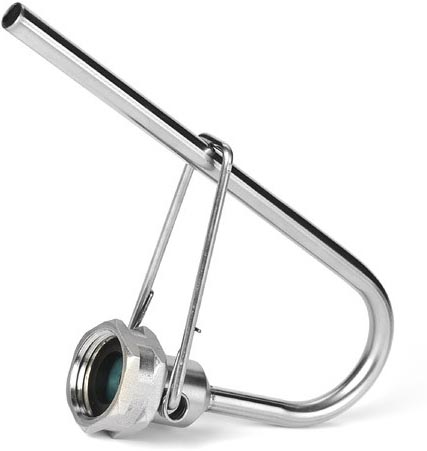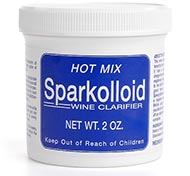 In several earlier posts, we introduced a few home winemaking terms. There are many terms to learn in home winemaking, and this post, like all the previous posts, gives you a short introduction to a few of those terms to help you get started in home winemaking, or perhaps brush up on some of the terms you may not have seen in a while.
In several earlier posts, we introduced a few home winemaking terms. There are many terms to learn in home winemaking, and this post, like all the previous posts, gives you a short introduction to a few of those terms to help you get started in home winemaking, or perhaps brush up on some of the terms you may not have seen in a while.
- Bottle Washer: Bottle washers are great little pieces of home winemaking equipment that you’ll end up using over and over again. Prior to bottling your wine, you need a clean vessel in which to put the wine. It can be really hard to clean a bottle due to its odd shape, and sometimes a bottle brush alone simply won’t cut it. The bottle washer is a stainless steel hose-like piece of winemaking equipment that you can attach to any sink that has outside threading (like outdoor or laundry sink faucets). This device, once attached to a faucet, will create a very high-powered stream of water which you can use to blast out dirt or soap particles from your wine bottles.
- Meritage: The term ‘Meritage’ is often referred to as the “American Bordeaux”. Created in California, “Meritage” is a mix of the words “merit” and “heritage”, and is pronounced similar to the latter word. A red Meritage is a red blend that must incorporate at least 2 of the 5 red Bordeaux grapes. A white Meritage is a white blend that must incorporate at least 2 of the three white Bordeaux varieties. You must be approved to use the term “Meritage” for your blends, and if you are approved, you must pay a fee to use the protected name.
 Sparkolloid: Sounds like it’s straight out of a science fiction movie, but no, it is actually a term used in winemaking. Sparkolloid is a fining agent made from clay, and is used to clear a wine after fermentation. On a basic chemical level, the positively charged Sparkolloid ions become attracted to the negatively charged unwanted bits and falls to the bottom of the container. Use this with Bentonite to ensure you have a clear wine.
Sparkolloid: Sounds like it’s straight out of a science fiction movie, but no, it is actually a term used in winemaking. Sparkolloid is a fining agent made from clay, and is used to clear a wine after fermentation. On a basic chemical level, the positively charged Sparkolloid ions become attracted to the negatively charged unwanted bits and falls to the bottom of the container. Use this with Bentonite to ensure you have a clear wine.- Yeast Hydration: Just as people need water to stay alive, yeasts, too, need hydration to become active. In order to jump start your wine yeast and get them ready to do their job of converting juice to wine, add them to about 4oz of water at no more than 100oF. Let the yeast sit and hydrate in the water for no more than 15 minutes, and then they are ready to start making some wine.
- Skeeter Pee: As unappetizing as it sounds, Skeeter Pee is actually lemon wine. It’s a very drinkable and become very popular, lately. There are many Skeeter Pee recipes out there, so good, so not so good so be careful.
———————————————————————————————————
Ed Kraus is a 3rd generation home brewer/winemaker and has been an owner of E. C. Kraus since 1999. He has been helping individuals make better wine and beer for over 25 years.
